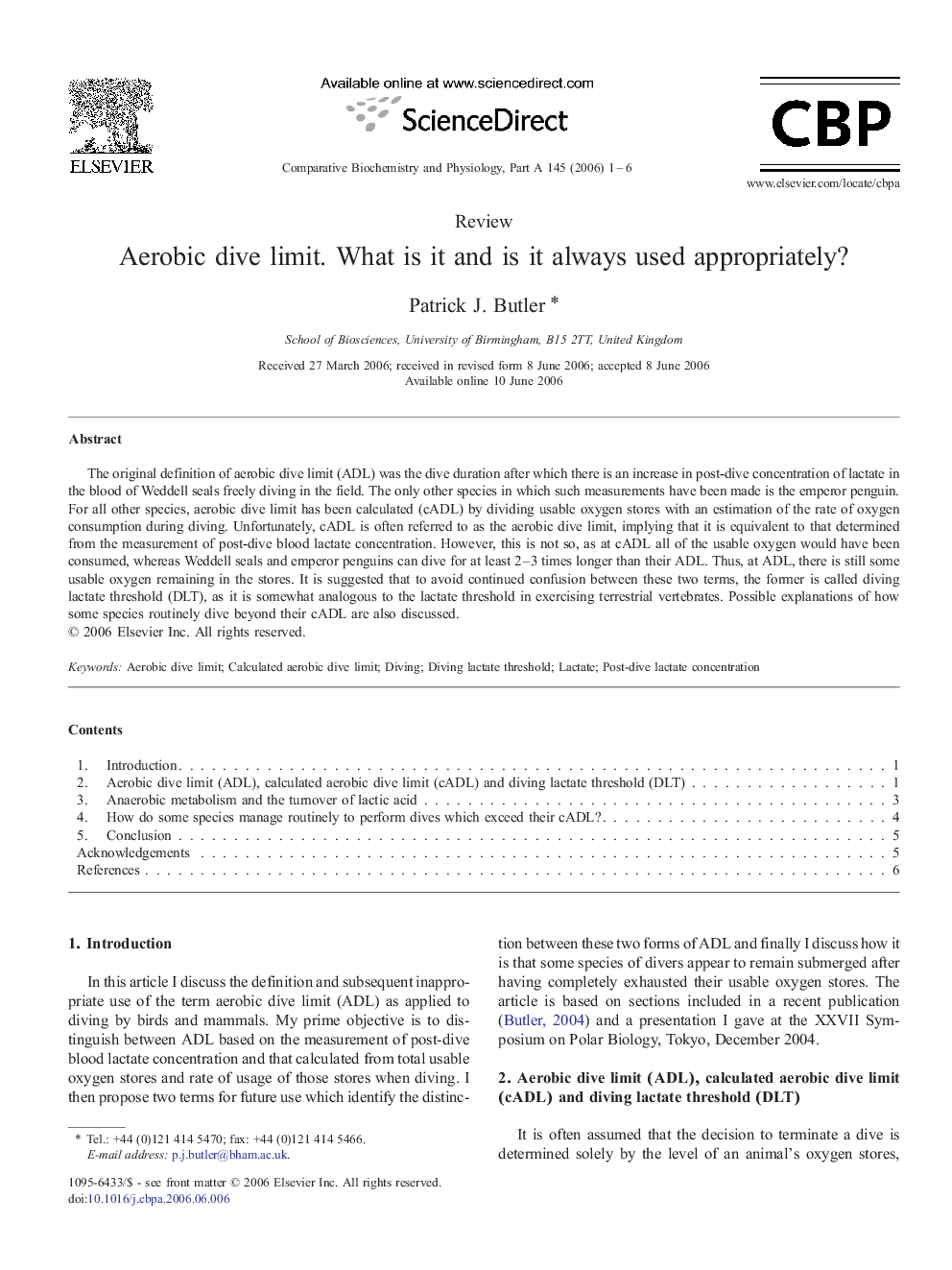| Article ID | Journal | Published Year | Pages | File Type |
|---|---|---|---|---|
| 1974310 | Comparative Biochemistry and Physiology Part A: Molecular & Integrative Physiology | 2006 | 6 Pages |
The original definition of aerobic dive limit (ADL) was the dive duration after which there is an increase in post-dive concentration of lactate in the blood of Weddell seals freely diving in the field. The only other species in which such measurements have been made is the emperor penguin. For all other species, aerobic dive limit has been calculated (cADL) by dividing usable oxygen stores with an estimation of the rate of oxygen consumption during diving. Unfortunately, cADL is often referred to as the aerobic dive limit, implying that it is equivalent to that determined from the measurement of post-dive blood lactate concentration. However, this is not so, as at cADL all of the usable oxygen would have been consumed, whereas Weddell seals and emperor penguins can dive for at least 2–3 times longer than their ADL. Thus, at ADL, there is still some usable oxygen remaining in the stores. It is suggested that to avoid continued confusion between these two terms, the former is called diving lactate threshold (DLT), as it is somewhat analogous to the lactate threshold in exercising terrestrial vertebrates. Possible explanations of how some species routinely dive beyond their cADL are also discussed.
